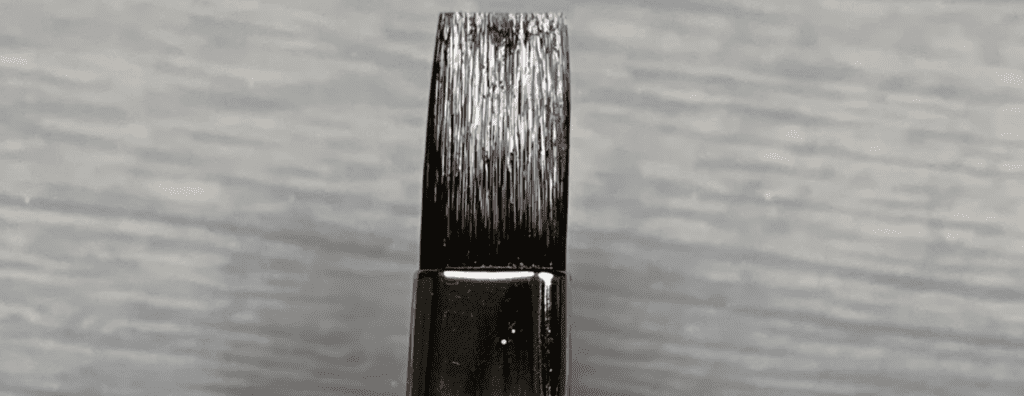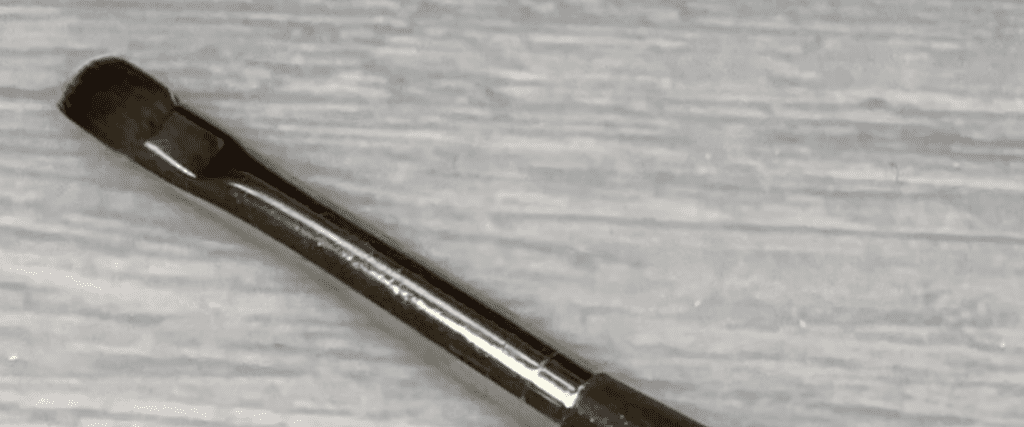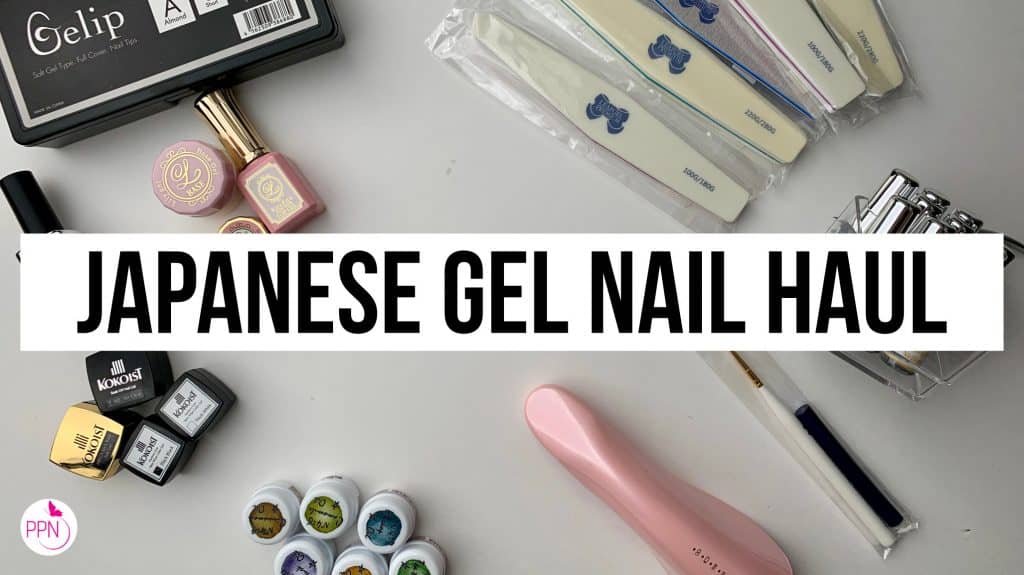I wish I could tell you that when selecting an application brush, there is a plethora of them. But when you break it down, there’s basically only flat or round.
In today’s video, we’ll identify why you may choose one shape over the other.
First, choose the option that feels more comfortable for you, whether round or square. With that being said, here are some benefits of each shape:
Square Brush
The preferred application brush for base gel in Japan.

Here are three benefits of a square brush:
1.A bit flatter than round brushes. You might have heard me say this before, but Japanese Gels are all about control. Nail artists from Japan grab tiny amounts of product to work on the nail, resulting in super natural-looking gel enhancements. This is why the flat brush is so popular. This shape grabs just enough product, and the width of bristles is wide enough to guide the gel to the entire nail surface without too much work. This is important because not only does it saves you product but also nail service time.
2.The corners allow you to round out the cuticle area. (detail the struggle one may have to outline the cuticle area, but how using the corners can help) The cuticle area is one of the main areas that will make or break you. What do returning clients and trendy nailfies have in common? Clean Cuticle areas and a flat brush can help with that. The sharp 90-degree corners are perfect for guiding exactly where you want the gel to go. Some artists use a liner brush to reach tight spaces, but if you’re going to stay fast and focused, learning to use the flat brush can replace all that.
3.The corners of a square brush can help you adjust the apex. Thanks to the self-leveling properties of the soak-off gel, we only guide it to where it needs to go. Use the corners of this brush in a vertical up-and-down motion, like brushing the nail back and forth to create the apex and distribute the gel correctly.
Now square brushes come in different sizes; usually, these sizes are not marked by the manufacturer. So let’s describe a few I have experience with, starting with the smallest.
Leafgel Flat: Small, thin. Great for product control, but maybe too small for sculptures long nails
Kokoist Flat: A tad bit longer than Leafgel, about the same thinness.
Kokoist Medium Flat: Almost twice as big as the original flat
Round Brush:
I could not work with anything other than round brushes, but slowly but surely, I coached myself to use a flat brush for base gel application.

Here are three benefits of a round brush:
1.The ideal shape to fit the cuticle area. This brush will make your job so much easier when framing the cuticle area. This brush has a technique, and this is what you do. Place the product about two millimeters away from the cuticle area and slowly push the bead of the gel forward, using the roundness of the gel and the brush to cover the curvature of the cuticle area.
2.Even gel application. Most brands write “best color application or gel application brush” on this brush’s product description, which has been my experience too. The color gel glides smoothly, painting the nail in less than 4 strokes.
3.Sharp point. This brush has a tapered end, like a cat’s tongue. The purpose is to allow the brush to deposit the gel on the nail surface without pulling it back off. Also, when you remove all the product from the tip, you can use it to fit between the sidewalls or move in a vertical up-and-down motion to help the self-leveling process.
Just like square brushes, round brushes come in different sizes but are not always denoted by the manufacturer.
Here are some details on favorites based on my experience:
Vetro Oval Brush: An all-time favorite, especially for color application. Super bouncy means it has flexibility and does not remove color with every stroke. Made in Japan. The top-quality nylon bristles provide excellent operability. The brush head is on the medium-small side of ~3.5-4.5mm wide and ~6mm long.
Kokoist Round Brush: An all-time favorite for me, especially for clear gels. Kokoist brushes are handcrafted in Kumano, Hiroshima, and they come with a brush certificate number to certify premium quality.
It feels just a tad big for color application but fantastic for all my clear gels. Nice and flexible, or like I like to say, bouncy. The bristles are ~7-8mm, longer than Vetro’s and Leafgel’s, but the width is around the same.
Kokoist Thin Round: Slowly creeping to be a fave.What I like the most is how firm it is. Perfect for scooping builder gel. This brush is shorted, wider, and thinner than the Kokoists Round brush.
Lily Gel Oval +: This oval brush is the perfect oval size for any application: foundation gels and colors. If you haven’t yet found a favorite, try this one. It’s got just the right amount of bounce.
And remember, Lily gel is Leafgel’s sister company.
As you can see, it is all up to you as far as square or round. I hope our tips on what we’ve used help you decide which ones you give a try. And in the beginning, as you’re starting, it is ok to give a few a try to find the ones suitable for you.
If you have your gel brushes sorted and want more support with your application, check out my free training HERE. You’ll learn three significant business shifts and the details of my Master Gel Nails Course.
If you want to try some of the brushes mentioned today, you can use code PPN10 at checkout for a 10% discount when buying from Zillabeau and Kokoist.
Thank you for watching, and I’ll see you the next week. Bye for now!
Content by Paola Ponce and Fabiola Saucedo
These blogs are copyrighted material and any use of this blog is not permitted without written concern first. Some of these blogs contain affiliate links that provide us with a small commission when qualifying purchases are made. Thank you for your support that helps us to continue creating valuable resources and content like this.


![[[ Nail Thoughts X Kokoist ]] Bottled Gel Launch | All COLORS SWATCHED](https://paolaponcenails.com/wp-content/uploads/2020/11/ntswatchesnewthumb-1024x575.jpg)